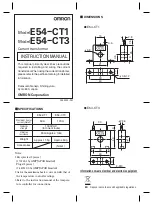
Instruction Manual
NivuFlow 650
page 56
NF 650 - rev. 01 / 29.06.2020
All other
input/output signals
and
input/output voltages
leaving the control cabinet must
also be considered in relation to overvoltages. In most cases, there is no galvanic isolation and
compensating currents can flow.
In applications particularly at risk of overvoltage, an additional
low-capacitance isolating
transformer
can further reduce the sensitivity to overvoltage events. However, this measure is
only useful if no overvoltages are injected into the control cabinet via the earth connection.
CAUTION
Protect connected extension modules by using "SonicPro T" overvoltage protection
Protect possibly used extension modules accordingly by using suitable overvoltage protec-
tion.
The procedure is described in the "Technical Description NFE Extension Module".
Disregarding may damage plants and facilities.
Modify SonicPro T overvoltage protection
Depending on the situation on site it may be necessary to modify the overvoltage protection
one time during installation to adapt the unit to the conditions on site.
Parameter setting preparations
This modification is not possible before the measurement place parameters have been
(partially) set (determination of the number of paths and ticking the checkbox for using a
SonicPro T overvoltage protection).
The measurement place parameters are set under >Application< / >Measure place<; see
Sect. “32.1 Setting parameters in Measurement place Menu” and “32.2 Setting parameters
in Measurement place Combi Menu”.
The transmitter defines in >Application< / >Diagnostics< / >v-Paths< (Fig. 24-7) whether two
red (150 Ω) or two blue (50 Ω) resistors must be connected additionally.
Fig. 24-7
Menu Application / Diagnostics / v-Paths
Â
Ü
Procedure:
1. Check under >Application< / >Diagnostics< / >v-Paths< (Fig. 24-7) which extra
resistors need to be connected to the SonicPro T overvoltage protection module:
red or blue.
2. Insert one resistor in the predetermined colour between the bottom and top termi-
nal each at 1p and 2p on the protected side as shown in Fig. 24-8.
















































